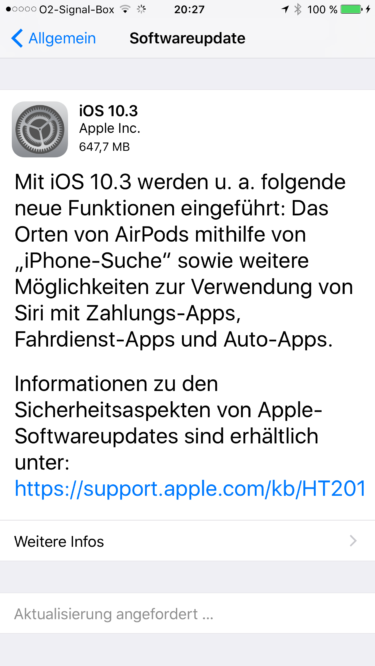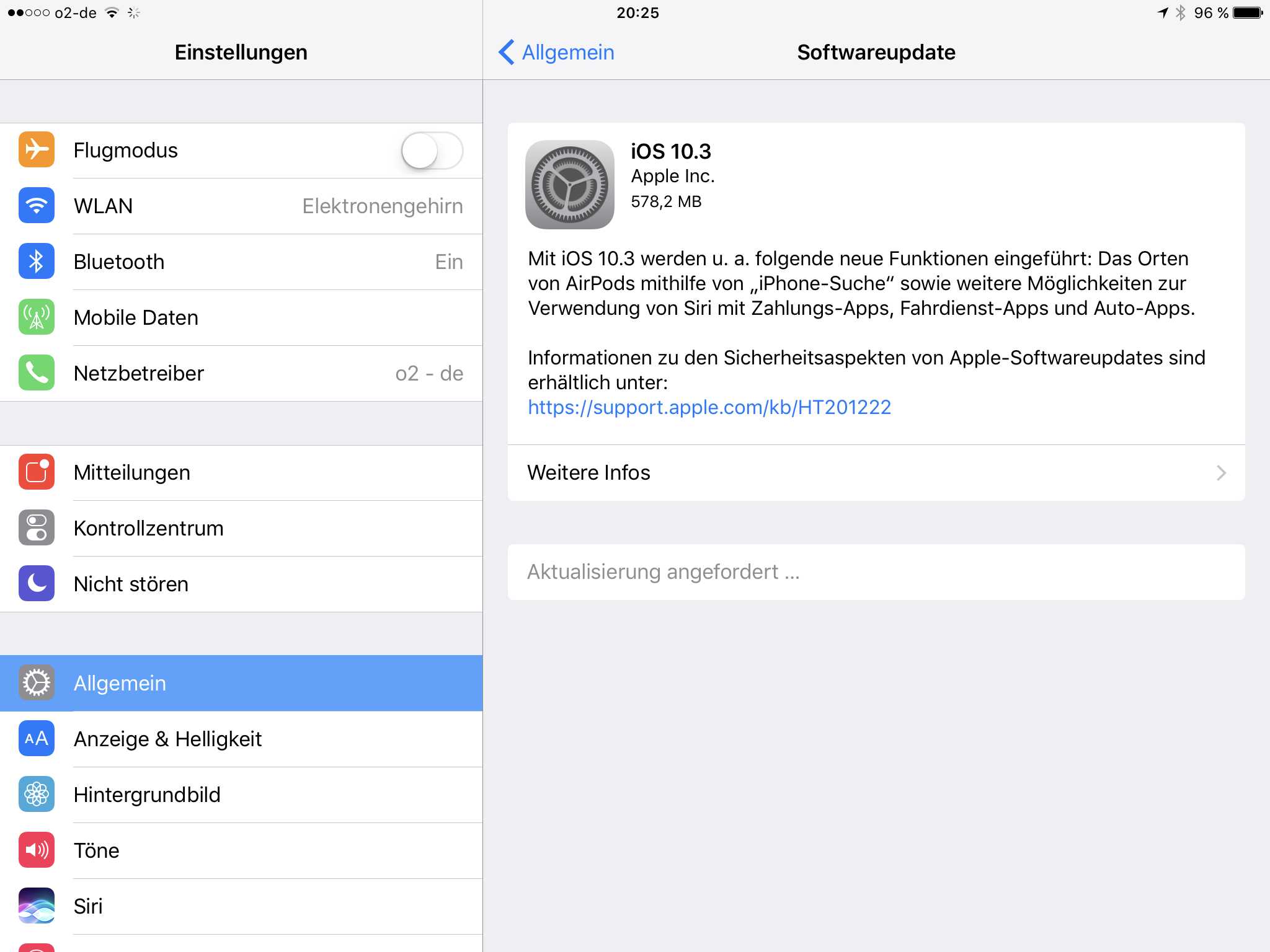Why iOS 10.3 is a thing – was macht iOS 10.3 sinnvoll? // File System APFS
 iOS 10.3 adds the new APFS – Apple File System – it is designed for SSD / Flash memory and therefore it is faster – more efficient and at leased gives you more memory since the way it „organizes“ data does not need the idea of a turning disc, sectors and other old things – just to but it in less technical words – it just frees up about 2-3 GB of extra RAM for that reason – there is a lot of details and tech.stuff to explore but on iPads and iPhones it is more or less no risc at all but it will be installed as soon as you update – on the Mac that won’t happen (I assume) since iOS has a very flat file structure – just one file bay per app and that’s it – no folders – nothing – not even sharing data with other apps – which is a mess for sampling and upload audio samples to multiple sampling or granular sampling apps – but that’s not a matter of the file system – it will be rolled out of macOS as well but maybe just for those macs that are new and at the point of installing a complete new os – so it will take longer to spread – and it is restricted to SSDs – it’s not made for classic mechanic hard drives that will still use HFS+.
iOS 10.3 adds the new APFS – Apple File System – it is designed for SSD / Flash memory and therefore it is faster – more efficient and at leased gives you more memory since the way it „organizes“ data does not need the idea of a turning disc, sectors and other old things – just to but it in less technical words – it just frees up about 2-3 GB of extra RAM for that reason – there is a lot of details and tech.stuff to explore but on iPads and iPhones it is more or less no risc at all but it will be installed as soon as you update – on the Mac that won’t happen (I assume) since iOS has a very flat file structure – just one file bay per app and that’s it – no folders – nothing – not even sharing data with other apps – which is a mess for sampling and upload audio samples to multiple sampling or granular sampling apps – but that’s not a matter of the file system – it will be rolled out of macOS as well but maybe just for those macs that are new and at the point of installing a complete new os – so it will take longer to spread – and it is restricted to SSDs – it’s not made for classic mechanic hard drives that will still use HFS+.
We’ll see how easy it is on macOS soon.. on IOS it was totally easy – so apple not even mentioned it in their info since they don’t like tech talk..
Apples neues iOS 10.3 bringt das neue Filesystem APFS auf iPhones und iPads. Was bringt das? Nun, es ist schneller und effizienter, da es davon aus gehen kann, dass das Speichermedium eine SSD oder Flash RAM ist. Auf diese Weise wird Speicher frei gesetzt (ca 2-3 GB) und bereits während der Installation des Updates ausgerollt. Das ist wohl möglich, obwohl dafür normalerweise das Medium neu formatiert werden muss. Für alle Anwendungen wird das File System große Geschwindigkeitsvorteile bringen und die Nachteile eines mechanischen Laufwerks in der Ansteuerung nicht mehr enthalten. Für den Mac gilt aber noch das klassische HFS+ Filesystem, solange es mechanische Platten gibt. Trotzdem wird auch da das neue APFS verteilt, also für Neurechner und neu partitionierte Laufwerke wird es angeboten werden – alle anderen werden es sicher nicht automatisch untergeschoben bekommen. Es wird viele Vorteile haben – aber Vorsicht ist geboten bei Programmen die nah am System mit Files umgehen, denn was für drehende Platten gut ist, ist für SSDs Gift und umgekehrt. Defragmentieren ZB. ist das nicht nur nicht gut sondern verkürzt die Lebensdauer und verbessert den Zugriff nicht mehr wie bei mechanischen Platten. Wie auch immer – APFS und iOS 10.3 bringen mehr Speed in alles was mit Files zu tun hat – und das ist gerade dort faktisch immer, da die iOS Geräte wenig RAM haben und das meiste auf dem Flash RAM machen. Apple behelligt idR ihre User nicht mit Tech-Blahblah, aber es ist alles schneller. Wir sind gespannt, was und wie das im MacOS umgesetzt wird – so problemlos und einfach wie hier in iOS? Diskutieren? iOS 10.3 und APFS – neues Filesystem 2GB mehr




